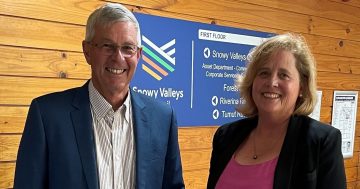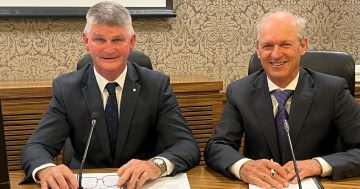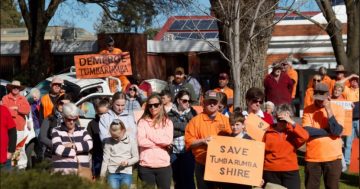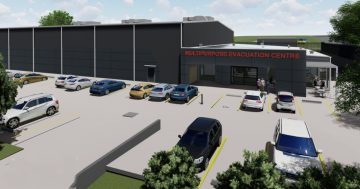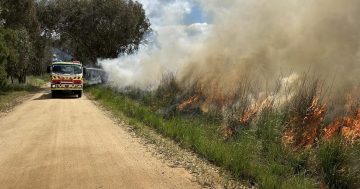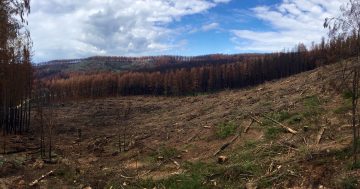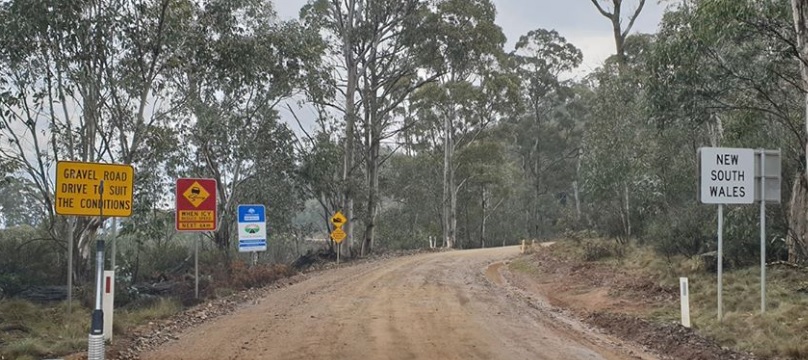
A section of the 45 km of unsealed Brindabella Road which Snowy Valleys Council views as a priority for 2020. Photo: Supplied.
If there was a rainbow for Snowy Valleys shire it would be paved with bitumen, adorned with yellow lines and lead all the way to Canberra.
At either end lie pots of gold – one offers speedy access to the Snowy Mountains and south. The other offers a vital link to the massive economic trade and tourism opportunities of Canberra.
Just 45 km of unsealed road is what’s stopping the 124 kilometre Brindabella Road – which links Tumut to Canberra – from becoming one of the most important transport routes in southern NSW.
That and $130 million.
Snowy Valleys mayor James Hayes says that in the wake of the crippling bushfires, there’s never been a better time for state and federal governments to commit funds to the project.
“We’ve got a business case for it – we think that for every dollar spent on the road it should bring $7 to the region,” he explained.
“It connects us with 400,000 potential visitors and an international market with Qatar Airways and Singapore Airlines flying into Canberra.”
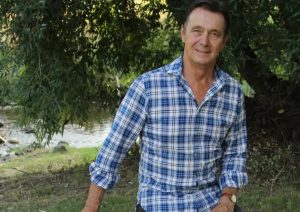
Snowy Valleys mayor James Hayes. Photo: Supplied.
This won’t just attract tourists to the region but, the mayor said, conversely, provides an optimal solution for export.
“That access means produce from the Riverina, Griffith and the Snowy Valleys could arrive in Singapore overnight,” Cr Hayes said.
The loss of 30 per cent of the region’s pine forests to fires is also on the mayor’s mind.
“If this road was to go ahead it will offer an economic boost in construction, it’s the sort of thing we need once we get that hiatus when we don’t have a lot of softwoods,” he added.
The four years since Snowy Valleys Council emerged from forced amalgamation of Tumut and Tumbarumba shires has yielded some belly-aching, especially from Save Tumbarumba Shire supporters, who say the council isn’t doing enough for their town.
Ironically, Cr Hayes will be the first to tell you he opposed amalgamation but, as part of the newly elected council, was selected to help lead it through its first tender years. He disagrees with the detractors.
“I wouldn’t have thought so, they certainly get looked after more than a lot of the other communities financially,” he said.
“It was all looking pretty rosy before the fires – Tumbarumba High School’s enrolments increased by 15 per cent, occupancy rates on rental accommodation sat at around 98 per cent, capital growth 7 per cent – all the economic indicators were in the black.”
With 45 per cent of the LGA charred, he says Tumbarumba is still reasonably well situated.
“Around 48,000 hectares of pine plantations have burnt,” he said. “The major employer in Tumut is the softwoods industry and fortunately for Tumbarumba it’s not just the timber industry – one of the bigger employees is the correctional centre, the second largest employer is council, there’s the blueberry industry, vignerons, beef and prime lamb industry – they’re quite diversified,” Cr Hayes said.
Opportunity also comes in the form of Snowy 2.0.
“When Snowy 2.0 gets going, they’ve got to get the power out and the TransGrid part of the power is about $2 billion worth and the closest town to that is Tumbarumba – it’s terrific for them,” he said.
“The unfortunate thing about talking your economy down is that there is a possibility it might become a reality if people start to believe the narrative you’re pedalling,” Cr Hayes added.
He cited his home town of Adelong as an example.
“Twenty jobs were lost due to the mine closure, Toll and the NRMA agency closed which resulted in job losses – but that community remained upbeat – it’s just how different communities perceive things,” he said.
The mayor said Adelong and Batlow relied heavily on industries hardest hit by the fires.
“We’ve lost most of our accommodation in Batlow and farmers near Adelong – you don’t see them – yet they provide much of the income for the town.
“Probably the major thing we’re doing now is supporting those communities recovering from the bushfires,” Cr Hayes said.
He said the message he’s been getting, especially from those in the north of the shire, is they’re generally happy.
“The council we’ve had for the past three years has been cohesive, collaborative, generally work together well without airing their dirty laundry – it’s quite refreshing to be involved in a council so conciliatory towards each other,” Cr Hayes said.
The mayor would like to see a definitive answer from the NSW Boundaries Commission, which is presently reviewing demerger submissions for both Snowy Valleys and Cootamundra-Gundagai councils.
“The least disruptive it is, the better,” he said, “but it’s business as usual until the government decrees which way they’re going, so we’ll just continue to forge ahead, we’ll continue to pick up the garbage, make sure the sewerage flushes away and the water arrives on time.”






